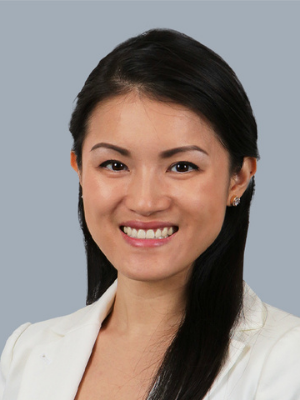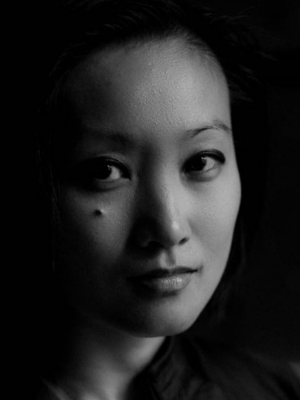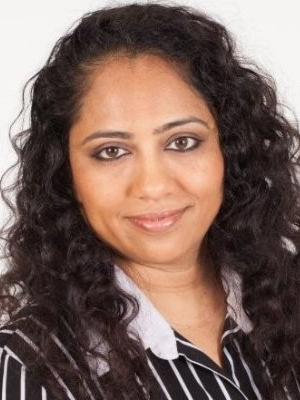 “It is very important to have a sponsor for your career” says Ivy Tsui. “You need somebody to advocate for you and be your voice in places where maybe you don’t have a voice.”
“It is very important to have a sponsor for your career” says Ivy Tsui. “You need somebody to advocate for you and be your voice in places where maybe you don’t have a voice.”
Tsui speaks to staying open and authentic, asking for sponsorship and embodying inclusion.
From Banking to Inclusion
“I have always been open to different opportunities beginning from early on in my career to now–because where you end up may not be where you thought you would go,” she advises. “Life is a journey and it’s not always linear.” Tsui’s parents immigrated to the US from Taiwan and Hong Kong, and she has learned a lot from their adaptability and unwavering spirit.
Tsui started out in banking after obtaining her dual-major bachelor’s degree in economics and international relations at Wellesley College. Tsui spent the first 14 years of her career at J.P. Morgan, and crossed many different disciplines–eventually landing in human resources–while obtaining her master’s degree in organizational psychology from Teacher’s College, Columbia University. In 2017, Tsui made the move to PGIM Real Estate.
While DE&I has always been an aspect of her HR work, in April, Tsui joined a new team headed by Christy Lockridge–the first Chief Diversity, Equity and Inclusion Officer of PGIM Real Estate–which is focused on advancing diversity, equity and inclusion in five key areas of impact: Talent, Culture, Industry, Investing, and Community. To Tsui, the new role feels like a culmination of her professional and personal experiences, especially as an Asian American woman.
Tsui is passionate about how the work of the DE&I team impacts people directly, and she’s especially energized about building a diverse pipeline of early talent. One of her key programs is the PGIM Real Estate Sophomore Training Program (STP), which gives college students early exposure, training and experience in the real estate industry–an industry that has historically not been very diverse. Tsui noticed the need to introduce real estate to students before their junior year (when students usually apply for internships) and has tripled the number of sophomore interns in the past four years.
“We often see students majoring in real estate because of a family member in the business. STP provides sophomores from diverse backgrounds, who otherwise may not know about real estate as a career possibility, the opportunity to work in real estate asset management.” says Tsui. “Some may not stay in real estate, but it opens a lot of different doors for them regardless.”
Being Open and Authentic
Tsui accredits her openness, adaptability and flexibility to her diverse and varied experiences: “I’ve never strategized about how this or that will bring me to the next level. I’ve been more interested in learning new things–sometimes, you have to take a step back or go lateral to really develop yourself.”
“I’ve always found people feel comfortable to talk and open up with me, and I make connections quite easily, and am able to meet people where they are at, which is quite a valuable skill in the HR and DE&I spaces.”
Describing herself as unconventional and an extroverted introvert, with a quirky sense of humor, Tsui has stayed true to herself and feels she has grown in self-confidence with time.
“One of the biggest pieces of advice to my younger self would be to let go of the fear to share my opinion,” says Tsui. “Early in my career, I was more conservative in offering my perspective and spoke only if I had the perfect comment. I’ve realized it’s okay to not always have the right answer or right idea, but it’s important to use your voice. There is power, value and hopefully impact, in sharing diverse perspectives.”
Tsui encourages mentees to do the same: “It doesn’t matter if you’re a junior level person in a room of more seasoned executives, you’ve been given a seat at the table for a reason and it is in the firm’s best interest to encourage and embrace your perspective. You have valuable things to say, so don’t sit in the background. Use your voice, early on.”
Asking For Sponsorship
Tsui absolutely recognizes the importance of being championed at work. She cites the difference between mentorship and sponsorship as critical: a mentor is someone who provides you with career advice and feedback and a sponsor is someone who directly advocates for you in your career development, whether for a promotion or an opportunity.
She encourages employees to have mentors and a sponsor but while she’s had highly valuable informal mentors, she has never had either a formal mentor nor a sponsor, and never asked for one.
“I think that’s partly because as an Asian American female, we’re taught ‘Just put your head down, work hard, do a good job and you’ll be rewarded or at least you won’t fail. Don’t ask for anything more and don’t rock the boat.’ But that doesn’t work.”
Tsui wishes someone had nudged her towards the advice she now gives: “My advice to everyone, but especially to Asian American women and people of color, is that you have to be in control of your own career and vocalize what you want. Even if it’s uncomfortable, you have to find mentors, formally or informally, and you absolutely need to find a sponsor.”
“I’ve learned that it’s important to be your own best advocate. Communication is key to ensure my manager and leaders in my group are informed of what I’m doing and know what my future interests are. This helps keep me in mind for both additional responsibilities and stretch opportunities.”
Embodying Inclusion
“As I’ve moved up, I’ve felt it’s increasingly important to make sure that all voices are heard. If a few people are dominating the Zoom conversation, and I see someone trying to speak or someone who doesn’t often speak, I will try to bring them in and have their voice included,” says Tsui. “When I was in that junior position, I would have loved if someone would have asked for my thoughts, so now I have that opportunity.”
Tsui also makes a point of saying hello to everybody she passes. And while it might seem basic, she notes you’d be surprised how often people just walk past each other. Especially as the senior person, it can help to create inclusion by simply acknowledging the more junior people you pass by.
Another regular practice is to thank people for their contributions in public to increase recognition. She also may draw a more hesitant person into a group conversation while at a networking opportunity.
“Much of this comes naturally to me, but some of it, I do with intent–especially if I see an opportunity to lead by example,” says Tsui.
Choosing Her Own Path
Tsui was advised by a current mentor not to compare her life or her career path to others, and that advice has served. Throughout her career, she’s made choices that were not linear, but were aligned to her personal desires–whether a lateral move to an opportunity outside of her comfort zone, time out of her career after having her third child, or choosing her location based on family-work rhythm.
“I made all those decisions based on what was more important for me at each of those times and they did have trade-offs – whether it was a less competitive salary or getting that more senior title, sooner,” notes Tsui. “But I am happier because of those experiences and grateful for them. This was my path, and I don’t compare myself to peers who chose a different path.”
Tsui met her Colombian husband, who was raised in Brazil, during her early investment banking years. They have three children – Sofia, 15, Bruno, 12 and Emma, 6. At any given time in her house, there’s a combination of Spanish, Portuguese and Mandarin being spoken. Based in New Jersey, she loves visiting her parents and sisters in California, and considers them to be a bicoastal family. She plays piano, and recently played Christmas Eve/Sarajevo 12/24 by the Trans-Siberian Orchestra with her nieces and nephew, although ballads are her usual jam.
By Aimee Hansen









